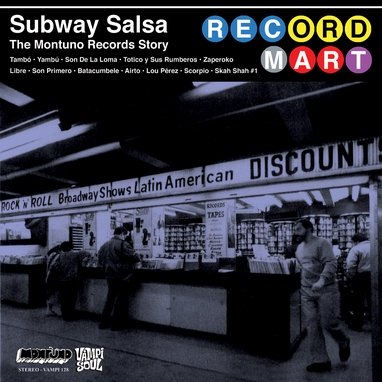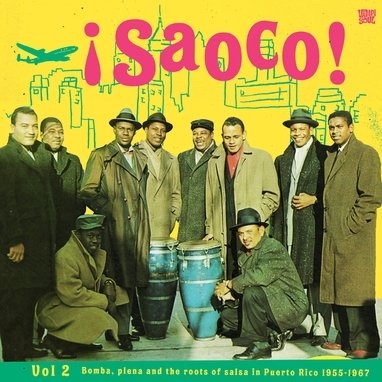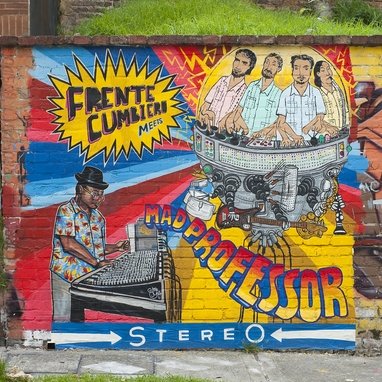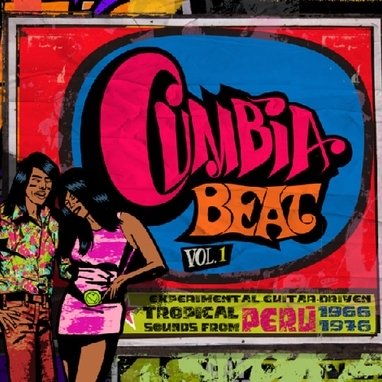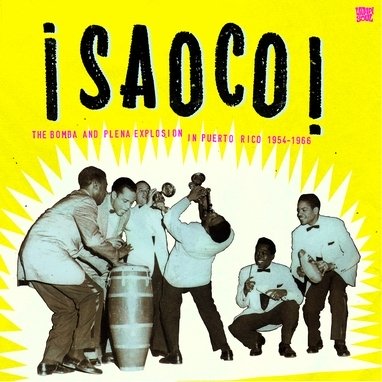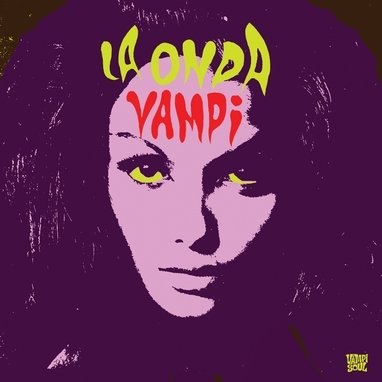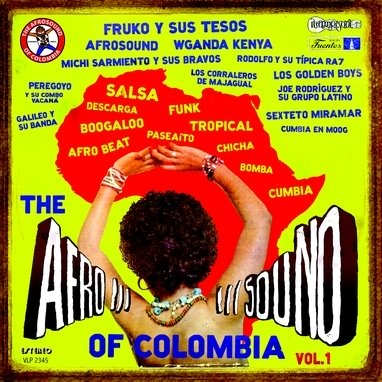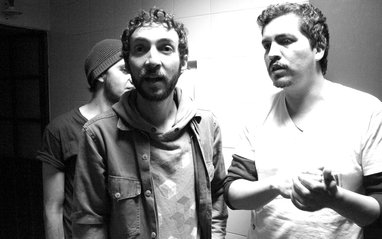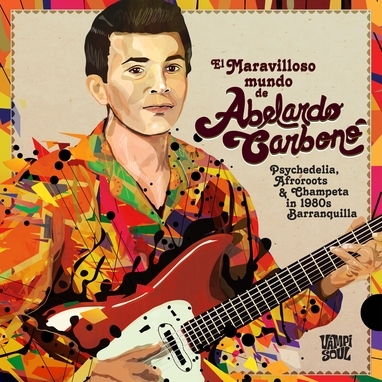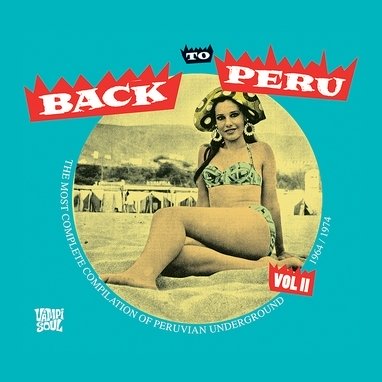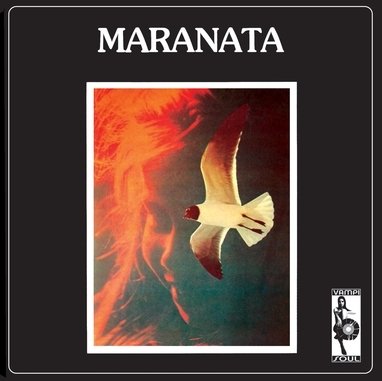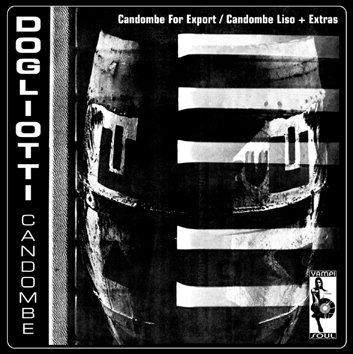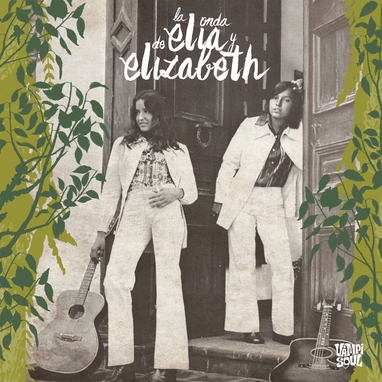Pedro Laza y sus Pelayeros
Rito esclavo
16,00€
Vampisoul
Pedro Laza y sus Pelayeros
Rito esclavo
First ever reissue of “Rito esclavo”, Pedro Laza’s eighth album as leader of Los Pelayeros, originally released on Discos Fuentes to great success in 1961. This early Fuentes classic LP is distinguished by high quality engineering that holds up brilliantly more than half a century later, with bright and deceptively intricate interlocking brass featuring a distinctive reed section, rolling tropical percussion and a wide variety of Caribbean rhythms from both Colombia (cumbia, porro, paseaíto, fandango) and Cuba (cha-cha-chá, mambo). Presented in facsimile artwork and pressed on 180g vinyl.
Pedro Laza Gutiérrez was born in 1904 in the northern Caribbean coastal port city of Cartagena de Indias, Colombia, and died there in 1980. After learning several instruments at a young age, Laza went on to study typography and graphic design, but at age 17 he knew that music was his calling, so he learned the bandurria (a type of small guitar), later learning to play the contrabass. At age 21 he founded his first musical group, Estudiantina Bolívar, which was more for informal gatherings of students and friends. In 1948 he began to organize a larger tropical orchestra with trumpets, trombones, saxophones and a rhythm section, called La Orquesta Nueva Granada. In 1952 he founded the Sonora Pelayera (named after San Pelayo, home of the porro), which in 1958 became known as Pedro Laza y sus Pelayeros when, under the supervision of Antonio Fuentes of Discos Fuentes, Laza was contracted to back Puerto Rican bohemian crooner Daniel Santos for the hit album “Candela”. Like Lito Barrientos, Pacho Galán and Lucho Bermúdez, Laza had fallen in love with the big band sound of swing jazz and the mambo of Pérez Prado, Benny Moré, Machito and Tito Puente, which had gained popularity in the society balls and hotel orchestras of the era. Laza also drew from Colombia’s own brass band traditions, of which San Pelayo is a famous exponent, especially with brass band arrangements of coastal genres like cumbia, fandango and porro. When Laza had joined Antonio Fuentes’ Emisora Fuentes orchestra as bassist and bandleader, Fuentes saw a great opportunity to support Laza’s innovative orchestration ideas by giving him the opportunity to record his own band, employing the great arranger and reedman Clímaco Sarmiento to help realize their concept. Many important musicians and vocalists worked with Los Pelayeros over the years, among them were the saxophonists Miguel Caro, Blas Sarmiento and Rufo Garrido, pianist Lalo Orozco and percussionist Clodomiro Montes. Aside from Daniel Santos, other vocalists included Luis Pérez Cedrón (aka Lucho Argaín), José María Peñaranda, Crescencio Camacho (as lead voice on many albums), Henry Castro and Eliseo Herrera, who sings here on “Rito esclavo” with his own composition, the double-entendre paseaíto ‘La mafafa’ (the edible tuber called cocoyam or malanga). In addition to being orchestra director and an adept interpreter of other composers’ music, Laza also wrote many compositions that both borrowed from and enriched coastal folklore such as ‘El cucayo’ and, along with Lalo Orozco, took part in the recording and direction of musical ensembles like La Sonora Dinamita and Los Corraleros de Majagual. “Rito esclavo” was an early Discos Fuentes stereo LP album and Laza’s eighth as leader of Los Pelayeros, being released to great success in 1961. Listening to the album evokes a bygone era of nattily dressed dancers swaying and sashaying across a hotel patio floor to the big band sounds of velvety saxophones, thrilling trumpets and tumbling drums under tall palm trees lit by moonlight as the sea laps the sand in the distance. Questionable cheesecake bondage album cover art aside, the record itself is distinguished by high quality engineering (a hallmark of Discos Fuentes engineer José María Fuentes) that still holds up more than half a century later, with bright and deceptively intricate interlocking brass featuring a distinctive reed section, rolling tropical percussion and a wide variety of Caribbean rhythms from both Colombia (cumbia, porro, paseaíto, fandango) and Cuba (cha-cha-chá, mambo). There are only two vocal numbers, the previously mentioned ‘La mafafa’ (also a hit for La Sonora Cordobesa) and the minor-key exotica title song ‘Rito esclavo’ (Slave Rite) sung by Mario Gareña, which is among one of the more dramatic cumbia hits of the ‘golden era’ Discos Fuentes catalog. Of the instrumentals, all are top notch but some especially stand out: ‘Señora Santana’ has an infectious melody, while ‘Lindo Magdalena’, named after the río Magdalena, a river that snakes through a region that is one of the cradles of Colombian folkloric music, is a classic cumbia that effortlessly blends urban big band instrumentation and authentic sounding indigenous percussion. The ironically bouncy ‘Lamento guajiro’ would not sound out of place on a Tito Puente album, while the porro ‘La varita de caña’ ends the record on an up note, leaving you nostalgic and wanting more. Pablo Yglesias aka DJ Bongohead
Productos relacionados
16,00€
First ever reissue of “Rito esclavo”, Pedro Laza’s eighth album as leader of Los Pelayeros, originally released on Discos Fuentes to great success in 1961. This early Fuentes classic LP is distinguished by high quality engineering that holds up brilliantly more than half a century later, with bright and deceptively intricate interlocking brass featuring a distinctive reed section, rolling tropical percussion and a wide variety of Caribbean rhythms from both Colombia (cumbia, porro, paseaíto, fandango) and Cuba (cha-cha-chá, mambo). Presented in facsimile artwork and pressed on 180g vinyl.
Pedro Laza Gutiérrez was born in 1904 in the northern Caribbean coastal port city of Cartagena de Indias, Colombia, and died there in 1980. After learning several instruments at a young age, Laza went on to study typography and graphic design, but at age 17 he knew that music was his calling, so he learned the bandurria (a type of small guitar), later learning to play the contrabass. At age 21 he founded his first musical group, Estudiantina Bolívar, which was more for informal gatherings of students and friends. In 1948 he began to organize a larger tropical orchestra with trumpets, trombones, saxophones and a rhythm section, called La Orquesta Nueva Granada. In 1952 he founded the Sonora Pelayera (named after San Pelayo, home of the porro), which in 1958 became known as Pedro Laza y sus Pelayeros when, under the supervision of Antonio Fuentes of Discos Fuentes, Laza was contracted to back Puerto Rican bohemian crooner Daniel Santos for the hit album “Candela”. Like Lito Barrientos, Pacho Galán and Lucho Bermúdez, Laza had fallen in love with the big band sound of swing jazz and the mambo of Pérez Prado, Benny Moré, Machito and Tito Puente, which had gained popularity in the society balls and hotel orchestras of the era. Laza also drew from Colombia’s own brass band traditions, of which San Pelayo is a famous exponent, especially with brass band arrangements of coastal genres like cumbia, fandango and porro. When Laza had joined Antonio Fuentes’ Emisora Fuentes orchestra as bassist and bandleader, Fuentes saw a great opportunity to support Laza’s innovative orchestration ideas by giving him the opportunity to record his own band, employing the great arranger and reedman Clímaco Sarmiento to help realize their concept. Many important musicians and vocalists worked with Los Pelayeros over the years, among them were the saxophonists Miguel Caro, Blas Sarmiento and Rufo Garrido, pianist Lalo Orozco and percussionist Clodomiro Montes. Aside from Daniel Santos, other vocalists included Luis Pérez Cedrón (aka Lucho Argaín), José María Peñaranda, Crescencio Camacho (as lead voice on many albums), Henry Castro and Eliseo Herrera, who sings here on “Rito esclavo” with his own composition, the double-entendre paseaíto ‘La mafafa’ (the edible tuber called cocoyam or malanga). In addition to being orchestra director and an adept interpreter of other composers’ music, Laza also wrote many compositions that both borrowed from and enriched coastal folklore such as ‘El cucayo’ and, along with Lalo Orozco, took part in the recording and direction of musical ensembles like La Sonora Dinamita and Los Corraleros de Majagual. “Rito esclavo” was an early Discos Fuentes stereo LP album and Laza’s eighth as leader of Los Pelayeros, being released to great success in 1961. Listening to the album evokes a bygone era of nattily dressed dancers swaying and sashaying across a hotel patio floor to the big band sounds of velvety saxophones, thrilling trumpets and tumbling drums under tall palm trees lit by moonlight as the sea laps the sand in the distance. Questionable cheesecake bondage album cover art aside, the record itself is distinguished by high quality engineering (a hallmark of Discos Fuentes engineer José María Fuentes) that still holds up more than half a century later, with bright and deceptively intricate interlocking brass featuring a distinctive reed section, rolling tropical percussion and a wide variety of Caribbean rhythms from both Colombia (cumbia, porro, paseaíto, fandango) and Cuba (cha-cha-chá, mambo). There are only two vocal numbers, the previously mentioned ‘La mafafa’ (also a hit for La Sonora Cordobesa) and the minor-key exotica title song ‘Rito esclavo’ (Slave Rite) sung by Mario Gareña, which is among one of the more dramatic cumbia hits of the ‘golden era’ Discos Fuentes catalog. Of the instrumentals, all are top notch but some especially stand out: ‘Señora Santana’ has an infectious melody, while ‘Lindo Magdalena’, named after the río Magdalena, a river that snakes through a region that is one of the cradles of Colombian folkloric music, is a classic cumbia that effortlessly blends urban big band instrumentation and authentic sounding indigenous percussion. The ironically bouncy ‘Lamento guajiro’ would not sound out of place on a Tito Puente album, while the porro ‘La varita de caña’ ends the record on an up note, leaving you nostalgic and wanting more. Pablo Yglesias aka DJ Bongohead
Productos relacionados
Rito esclavo
First ever reissue of “Rito esclavo”, Pedro Laza’s eighth album as leader of Los Pelayeros, originally released on Discos Fuentes to great success in 1961. This early Fuentes classic LP is distinguished by high quality engineering that holds up brilliantly more than half a century later, with bright and deceptively intricate interlocking brass featuring a distinctive reed section, rolling tropical percussion and a wide variety of Caribbean rhythms from both Colombia (cumbia, porro, paseaíto, fandango) and Cuba (cha-cha-chá, mambo). Presented in facsimile artwork and pressed on 180g vinyl.
Pedro Laza Gutiérrez was born in 1904 in the northern Caribbean coastal port city of Cartagena de Indias, Colombia, and died there in 1980. After learning several instruments at a young age, Laza went on to study typography and graphic design, but at age 17 he knew that music was his calling, so he learned the bandurria (a type of small guitar), later learning to play the contrabass. At age 21 he founded his first musical group, Estudiantina Bolívar, which was more for informal gatherings of students and friends. In 1948 he began to organize a larger tropical orchestra with trumpets, trombones, saxophones and a rhythm section, called La Orquesta Nueva Granada. In 1952 he founded the Sonora Pelayera (named after San Pelayo, home of the porro), which in 1958 became known as Pedro Laza y sus Pelayeros when, under the supervision of Antonio Fuentes of Discos Fuentes, Laza was contracted to back Puerto Rican bohemian crooner Daniel Santos for the hit album “Candela”. Like Lito Barrientos, Pacho Galán and Lucho Bermúdez, Laza had fallen in love with the big band sound of swing jazz and the mambo of Pérez Prado, Benny Moré, Machito and Tito Puente, which had gained popularity in the society balls and hotel orchestras of the era. Laza also drew from Colombia’s own brass band traditions, of which San Pelayo is a famous exponent, especially with brass band arrangements of coastal genres like cumbia, fandango and porro. When Laza had joined Antonio Fuentes’ Emisora Fuentes orchestra as bassist and bandleader, Fuentes saw a great opportunity to support Laza’s innovative orchestration ideas by giving him the opportunity to record his own band, employing the great arranger and reedman Clímaco Sarmiento to help realize their concept. Many important musicians and vocalists worked with Los Pelayeros over the years, among them were the saxophonists Miguel Caro, Blas Sarmiento and Rufo Garrido, pianist Lalo Orozco and percussionist Clodomiro Montes. Aside from Daniel Santos, other vocalists included Luis Pérez Cedrón (aka Lucho Argaín), José María Peñaranda, Crescencio Camacho (as lead voice on many albums), Henry Castro and Eliseo Herrera, who sings here on “Rito esclavo” with his own composition, the double-entendre paseaíto ‘La mafafa’ (the edible tuber called cocoyam or malanga). In addition to being orchestra director and an adept interpreter of other composers’ music, Laza also wrote many compositions that both borrowed from and enriched coastal folklore such as ‘El cucayo’ and, along with Lalo Orozco, took part in the recording and direction of musical ensembles like La Sonora Dinamita and Los Corraleros de Majagual. “Rito esclavo” was an early Discos Fuentes stereo LP album and Laza’s eighth as leader of Los Pelayeros, being released to great success in 1961. Listening to the album evokes a bygone era of nattily dressed dancers swaying and sashaying across a hotel patio floor to the big band sounds of velvety saxophones, thrilling trumpets and tumbling drums under tall palm trees lit by moonlight as the sea laps the sand in the distance. Questionable cheesecake bondage album cover art aside, the record itself is distinguished by high quality engineering (a hallmark of Discos Fuentes engineer José María Fuentes) that still holds up more than half a century later, with bright and deceptively intricate interlocking brass featuring a distinctive reed section, rolling tropical percussion and a wide variety of Caribbean rhythms from both Colombia (cumbia, porro, paseaíto, fandango) and Cuba (cha-cha-chá, mambo). There are only two vocal numbers, the previously mentioned ‘La mafafa’ (also a hit for La Sonora Cordobesa) and the minor-key exotica title song ‘Rito esclavo’ (Slave Rite) sung by Mario Gareña, which is among one of the more dramatic cumbia hits of the ‘golden era’ Discos Fuentes catalog. Of the instrumentals, all are top notch but some especially stand out: ‘Señora Santana’ has an infectious melody, while ‘Lindo Magdalena’, named after the río Magdalena, a river that snakes through a region that is one of the cradles of Colombian folkloric music, is a classic cumbia that effortlessly blends urban big band instrumentation and authentic sounding indigenous percussion. The ironically bouncy ‘Lamento guajiro’ would not sound out of place on a Tito Puente album, while the porro ‘La varita de caña’ ends the record on an up note, leaving you nostalgic and wanting more. Pablo Yglesias aka DJ Bongohead
First ever reissue of “Rito esclavo”, Pedro Laza’s eighth album as leader of Los Pelayeros, originally released on Discos Fuentes to great success in 1961. This early Fuentes classic LP is distinguished by high quality engineering that holds up brilliantly more than half a century later, with bright and deceptively intricate interlocking brass featuring a distinctive reed section, rolling tropical percussion and a wide variety of Caribbean rhythms from both Colombia (cumbia, porro, paseaíto, fandango) and Cuba (cha-cha-chá, mambo). Presented in facsimile artwork and pressed on 180g vinyl.
Pedro Laza Gutiérrez was born in 1904 in the northern Caribbean coastal port city of Cartagena de Indias, Colombia, and died there in 1980. After learning several instruments at a young age, Laza went on to study typography and graphic design, but at age 17 he knew that music was his calling, so he learned the bandurria (a type of small guitar), later learning to play the contrabass. At age 21 he founded his first musical group, Estudiantina Bolívar, which was more for informal gatherings of students and friends. In 1948 he began to organize a larger tropical orchestra with trumpets, trombones, saxophones and a rhythm section, called La Orquesta Nueva Granada. In 1952 he founded the Sonora Pelayera (named after San Pelayo, home of the porro), which in 1958 became known as Pedro Laza y sus Pelayeros when, under the supervision of Antonio Fuentes of Discos Fuentes, Laza was contracted to back Puerto Rican bohemian crooner Daniel Santos for the hit album “Candela”. Like Lito Barrientos, Pacho Galán and Lucho Bermúdez, Laza had fallen in love with the big band sound of swing jazz and the mambo of Pérez Prado, Benny Moré, Machito and Tito Puente, which had gained popularity in the society balls and hotel orchestras of the era. Laza also drew from Colombia’s own brass band traditions, of which San Pelayo is a famous exponent, especially with brass band arrangements of coastal genres like cumbia, fandango and porro. When Laza had joined Antonio Fuentes’ Emisora Fuentes orchestra as bassist and bandleader, Fuentes saw a great opportunity to support Laza’s innovative orchestration ideas by giving him the opportunity to record his own band, employing the great arranger and reedman Clímaco Sarmiento to help realize their concept. Many important musicians and vocalists worked with Los Pelayeros over the years, among them were the saxophonists Miguel Caro, Blas Sarmiento and Rufo Garrido, pianist Lalo Orozco and percussionist Clodomiro Montes. Aside from Daniel Santos, other vocalists included Luis Pérez Cedrón (aka Lucho Argaín), José María Peñaranda, Crescencio Camacho (as lead voice on many albums), Henry Castro and Eliseo Herrera, who sings here on “Rito esclavo” with his own composition, the double-entendre paseaíto ‘La mafafa’ (the edible tuber called cocoyam or malanga). In addition to being orchestra director and an adept interpreter of other composers’ music, Laza also wrote many compositions that both borrowed from and enriched coastal folklore such as ‘El cucayo’ and, along with Lalo Orozco, took part in the recording and direction of musical ensembles like La Sonora Dinamita and Los Corraleros de Majagual. “Rito esclavo” was an early Discos Fuentes stereo LP album and Laza’s eighth as leader of Los Pelayeros, being released to great success in 1961. Listening to the album evokes a bygone era of nattily dressed dancers swaying and sashaying across a hotel patio floor to the big band sounds of velvety saxophones, thrilling trumpets and tumbling drums under tall palm trees lit by moonlight as the sea laps the sand in the distance. Questionable cheesecake bondage album cover art aside, the record itself is distinguished by high quality engineering (a hallmark of Discos Fuentes engineer José María Fuentes) that still holds up more than half a century later, with bright and deceptively intricate interlocking brass featuring a distinctive reed section, rolling tropical percussion and a wide variety of Caribbean rhythms from both Colombia (cumbia, porro, paseaíto, fandango) and Cuba (cha-cha-chá, mambo). There are only two vocal numbers, the previously mentioned ‘La mafafa’ (also a hit for La Sonora Cordobesa) and the minor-key exotica title song ‘Rito esclavo’ (Slave Rite) sung by Mario Gareña, which is among one of the more dramatic cumbia hits of the ‘golden era’ Discos Fuentes catalog. Of the instrumentals, all are top notch but some especially stand out: ‘Señora Santana’ has an infectious melody, while ‘Lindo Magdalena’, named after the río Magdalena, a river that snakes through a region that is one of the cradles of Colombian folkloric music, is a classic cumbia that effortlessly blends urban big band instrumentation and authentic sounding indigenous percussion. The ironically bouncy ‘Lamento guajiro’ would not sound out of place on a Tito Puente album, while the porro ‘La varita de caña’ ends the record on an up note, leaving you nostalgic and wanting more. Pablo Yglesias aka DJ Bongohead


